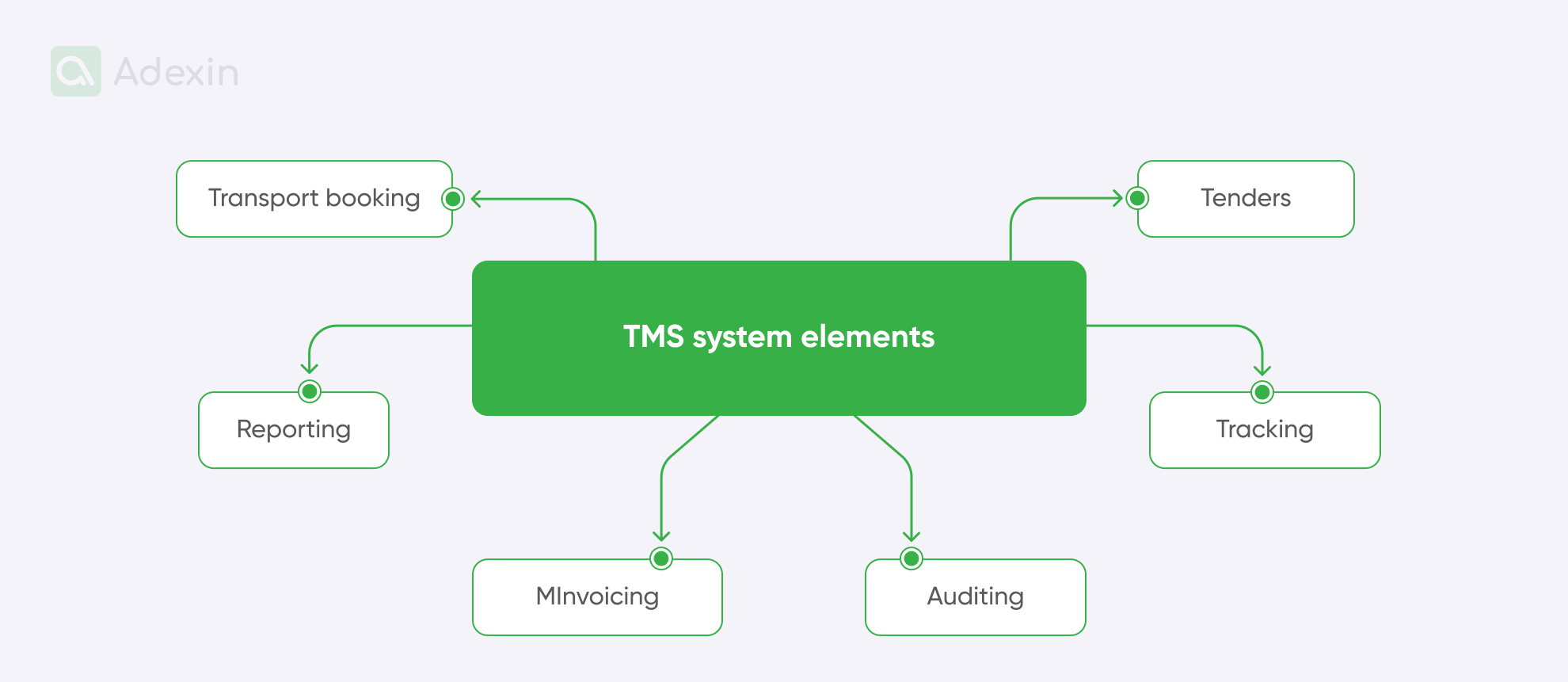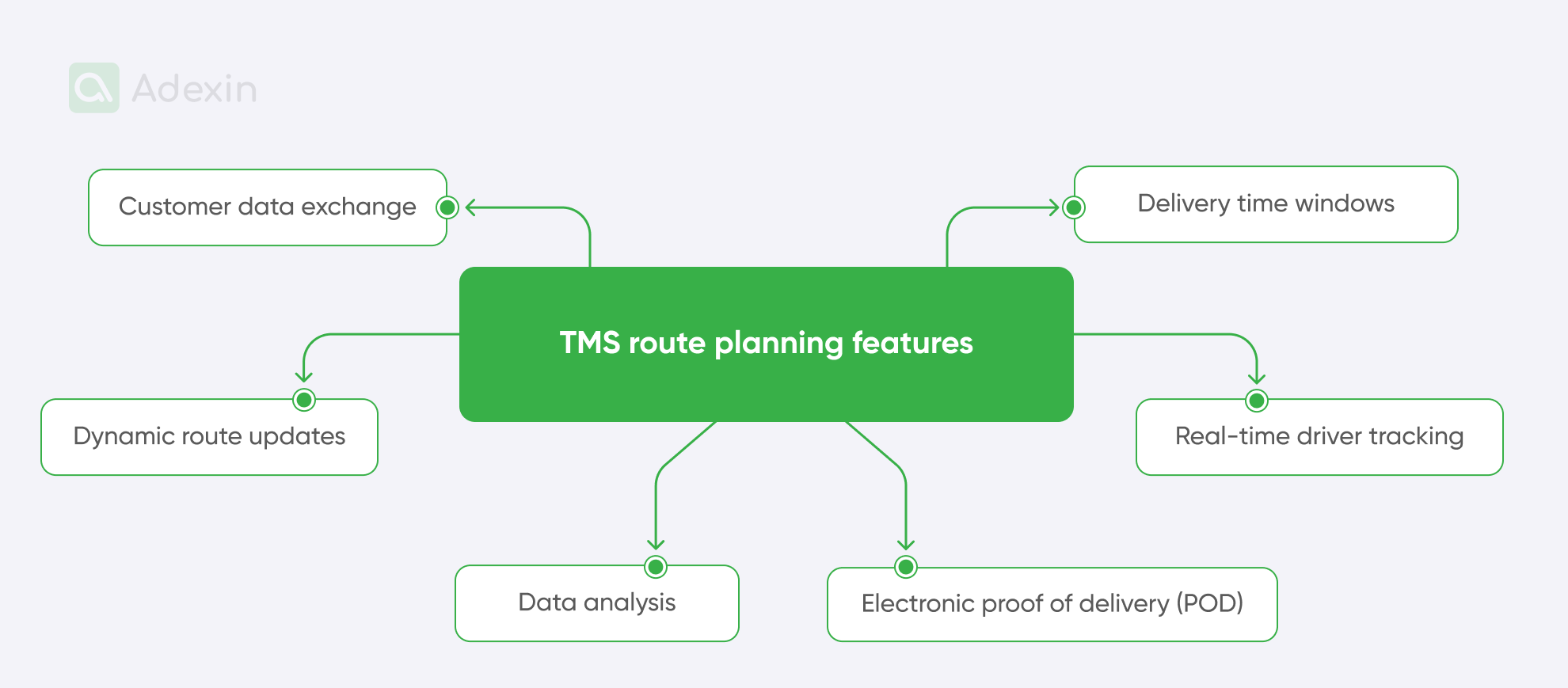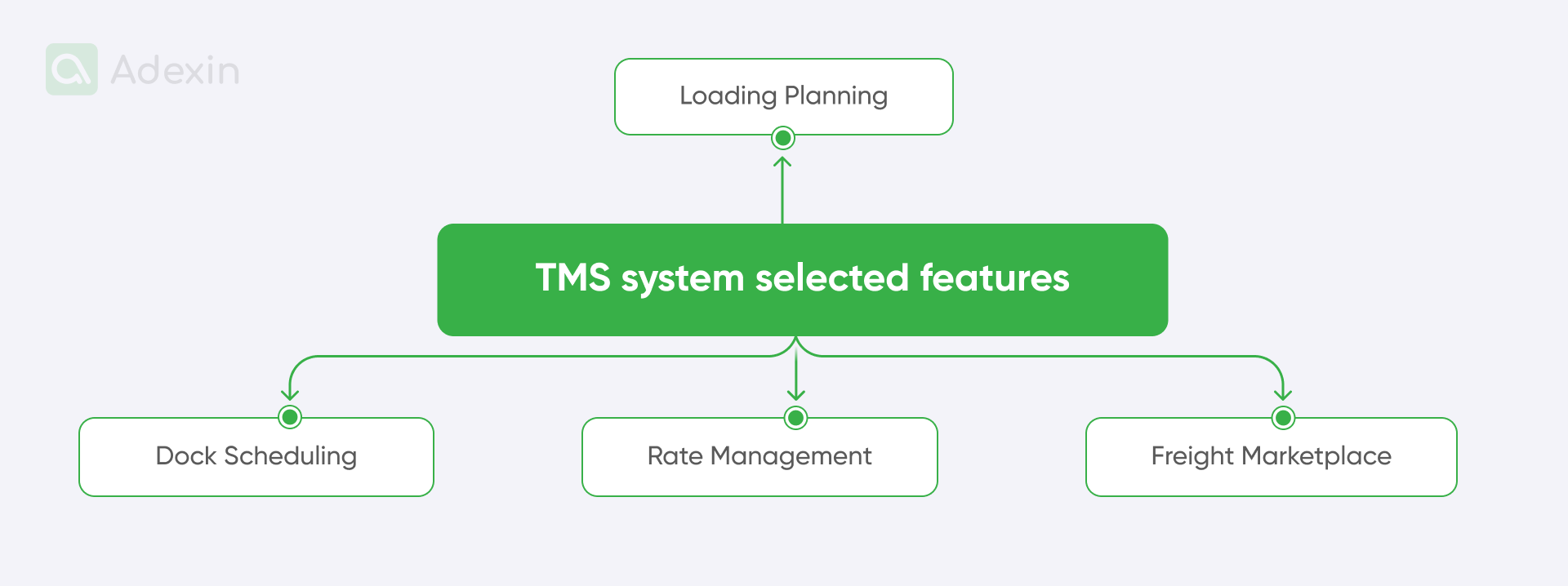Summary
Transportation management systems (TMS) are essential for streamlining logistics and transportation operations. It is commonly known that TMS can provide fleet management and analytics to optimize your logistics, but you may also be interested in additional features that can be embedded in your TMS. Some approaches in system development can create a competitive edge in the transportation industry. This is how many companies today benefit from marketing, obtaining better solutions that allow them to do more with less. "Less" in this case means less labor, more cost-effective, and time-efficient operations. What else could be better? Join us on this short journey to learn more about TMS for startups and medium-sized companies.
What is transportation management?
Defining transportation management system (TMS), we can position this as the technology that pushes logistics toward better cooperation, more effective planning, and transportation processes execution. TMS is a solution for logistics and transportation industries based on a specially designed digital platform.
TMS encompasses both inbound and outbound operations and, at the same ensures compliance and the availability of proper documentation. In most common cases, it involved a much broader subject built around Supply Chain management (SCM). TMS offers insights into daily transportation issues and simplifies the delivery process, which allows organizations to effectively oversee and optimize their transportation operations across various modes, along with land, air, and sea.

Here are the main elements and functions of the TMS system:
Transport booking
Inside the TMS system, logistics employees can manage transport bookings based on the available carrier list with the best available rates.
Tenders
The functionality of TMS allows the sending of bids via email, Electronic Data Interchange (EDI), or API with customized tender documents to carriers and freight forwarders.
Tracking
Carriers can update shipment statuses in real-time by using the TMS function for traceability. Logistics users can access tracking on the dashboard as well as share proof of delivery (POD).
Auditing
Thanks to ongoing data collection, TMS helps detect and avoid discrepancies in performances and automate workflow in document management. This way, the company can constantly audit continuous processes, minimizing errors.
Invoicing
Options in TMS allow straightforward generation of one-click freight invoices when information is entered. It helps extract approved AP data for payment processing and reconcile invoices to decrease discrepancies.
Reporting
Forecasting capabilities are one of the best features of TMS. Thanks to this, you can generate summary reports, activity reports, keep running on key performance indicators (KPI) and advanced reports for costs and tonnage, etc.
Which companies use TMS?
General statistics from the EU show that almost 60% of land transport is outsourced, and in sea and air transportation, this figure rises to 90%. These numbers speak for themselves. Therefore, by observing current industry trends, we can easily determine which companies are genuinely obligated to use TMS. [2]
Frankly speaking, TMS is suitable for both large companies, small and medium size businesses (SMBs), and small logistics startups. This is because profit margins in transportation are very narrow. A simple example can illustrate the significance of fuel prices. Due to high market fluctuations and rapidly changing economic conditions, companies are exposed to unpredictable fuel price shifts. It becomes evident that as transportation costs increase alongside rising fuel prices, profit margins cannot remain excessively high and must remain competitive.
By using software dedicated to TMS, transportation companies can gain a holistic insight into truck fleet's management, route planning, scheduling for various processes, etc . Therefore, TMS holds equal importance for large and medium-sized transportation companies as well as startups. This means that you can benefit from transportation management solutions regardless of the size of your company.

Here are the main reasons why to use TMS software:
Scalability
Scalability in TMS refers to the system's ability to adapt to changes in transportation needs. This is a crucial aspect important for logistics SMBs. Such companies should effectively handle an increased number of shipments, routes, and different modes of transportation.
Integration
A good TMS should integrate seamlessly with existing software systems outside and inside the organization. TMS should have integration capabilities with warehouse management system (WMS), document management system (DMS), and integration with freight forwarders system to exchange EDI.
User-Friendly
TMS combines various functionalities, which streamline transport operations and locate all tasks in a single platform. It is also equipped with an intuitive interface or other customization options available along with custom software development.
Cost
The main factor for using TMS is that it helps run the business cost-effectively and offers a solid return on investment. In practice, this element is significant for logistics SMBs to track carefully all expenses and find savings.
Cheaper logistics based on route mapping software
Looking through the intermodal transportation for rail and the data published by the European Commission and DG Energy and Transport, the punctuality of international combined transport trains is below 60 %. This means that 60% of shipments provided via rail will be delayed. Quite a dangerous perspective for logistics, especially when we consider penalties from the contractual agreements in logistics. [1]
Despite rail transport continuously improving delivery time, we can observe that it might be highly ineffective on distances below 1000km. [1] Nevertheless, on some routes, intermodal transport can be more effective by rail as rail transport uses six times less energy than road transport.
This data can collectively be gathered only if the company has access to digital tools that evaluate route planning and fuel usage. TMS has the critical function of route mapping, or other words, route planning software, where you can choose the most optimal transport mode along with routes.

Here are the TMS route planning features:
Customer data exchange
Good TMS route planning software should easily handle customer data from various formats and e-commerce platforms. This subject boils down again to deep integration with various systems.
Real-time driver tracking
Real-time driver tracking is a TMS route planning function that ensures accurate estimated delivery time (ETAs) and cost-effective routes.
Delivery time windows
Using TMS, you can optimize routes with specific delivery time windows to increase customer satisfaction.
Dynamic route updates
Route planning is most likely to help you avoid dead freight or empty loads, so TMS can get updated routes in real time, even after drivers are on the way to collect the shipment.
Data analysis
TMS route mapping can give you an insight into route performance to ensure on-time deliveries and resolve bottlenecks.
Electronic proof of delivery (POD)
Within TMS, you can see directly captured digital proof of delivery with signatures or photos of packages to improve efficiency and accuracy.
Integration between transportation & logistics software
Large transportation and logistics companies are using many interconnected systems from Oracle for invoicing, Crystal Reports, and so on. This situation isn't different for small and medium sized businesses, where probably your business is already using a certain number of supporting software solutions for operation.
Good TMS can integrate all existing systems in your operation without harassing ongoing operations. Here are examples of the most common systems in logistics supported by software that can integrate with TMS:
Financial system
TMS should integrate seamlessly with software that allows for managing finances, invoices for transportation infrastructure, and payments.
Carrier and forwarder system
3rd party logistics providers (3LP) can allow communication via API. Therefore, your TMS should include logistics companies, freight forwarders, and carrier systems for better operability.
Procurement system
Advanced systems for procurement can often help compare various carriers, and this should be an option for integration with TMS. It is especially important before pick season in logistics.
Inventory management system
TMS, to increase accuracy and visibility, should integrate with inventory management to optimize inventory levels and meet customer demand due to systems like just-in-time delivery or just-in-sequence.
Warehouse management system (WMS)
TMS to ensure on-time delivery should be integrated with WMS to better manage product availability and location in the warehouse and estimate delivery time.
Returns Management System (RMS)
To avoid overloading warehouse space due to poorly relocated returns, TMS should be integrated with the RMS system to efficiently handle returns, reducing costs and improving customer service.
Good TMS can also integrate various transport modes and supportive functions from outside service providers such as
City street traffic
TMS can integrate with the local system for street traffic control to strategically plan routes and detect parking lots for truck driver stops.
Route planning tools
Integrating TMS with route planning tools with GPS can help incorporate multiple transport modes for a well-rounded travel experience and minimize the probability of delays.
Transport maps
Integrating TMS with service providers for maps, such as Google or TomTom, can indicate interchanges with other systems for route clarity.
Tachograph
TMS can integrate with hardware that provides data on truck drivers' working hours and can transmit street camera views from the truck driver's cockpit.
Cost-effective routing programs for delivery for logistics startup
There is a forecast given by Deloitte that in 2024, global freight volume will surge from 54.69 billion tons (measured in 2015) to 92.1 billion tons. These trends give us almost a 100% increase in the transportation market in less than ten years. These trends can be strong evidence that transportation companies require a detailed routing program for delivery to remain cost-effective in their operations. [2]
Considering the above, competition will also become much higher, so every company entering the market, including logistics SMBs, may need to give serious consideration to good TMS software. What makes a TMS system more competitive is customized features that can comply with specific business requirements. These may be deployed by custom software developers who have expertise in the transportation industry.

Custom software developers can increase your competitiveness with custom features for your TMS system. Here are some features that can be deployed in your TMS:
Loading Planning
Efficient load scheduling optimizes cargo space for trailers and containers. Deploying this feature in TMS can reduce shipping costs and increase cost efficiency.
Dock Scheduling
Dock scheduling coordinates truck arrivals and manages space in the warehouse. Integrating this function with TMS can reduce wait times for unloading and streamline order processing.
Rate Management
Rate Management maintains carrier rate databases for cost control and pricing. Adding this function to TMS allows you to quickly choose competitive pricing and secure better deals on certain routes.
Freight Marketplace
Freight marketplaces connect shippers and carriers across the supply chain. Connecting this function to TMS can improve capacity and lower transportation costs.
Most TMS systems provide fleet management and route analysis for executing basic tasks for shipping. Using TMS custom software development can give you easy access to consultants' knowledge and features that are not available in typical off-the-shelf software solutions.
A short outlook on TMS
Custom software developers are making TMS more competitive, and this directly enhances your business's competitiveness. With the growing demand for logistics services, it's clear that this is an opportune time to seize the opportunity and position your business for success.
Adexin is a company that offers tailored solutions for the transportation industry. We understand the crucial features needed to meet specific business requirements. By staying updated with the latest trends in the transportation industry, we ensure that we provide the best features and technology. Contact us today to explore how we can assist you in optimizing your transportation solutions.
References:
[1] Statistical coverage and economic analysis of the logistics sector in the EU; Retrieved from: https://transport.ec.europa.eu/system/files/2016-09/2008_12_logistics.pdf
[2] Transport Management System Compass; Retrieved from: https://www2.deloitte.com/content/dam/Deloitte/de/Documents/consumer-business/transportation_management_system_compass.pdf
